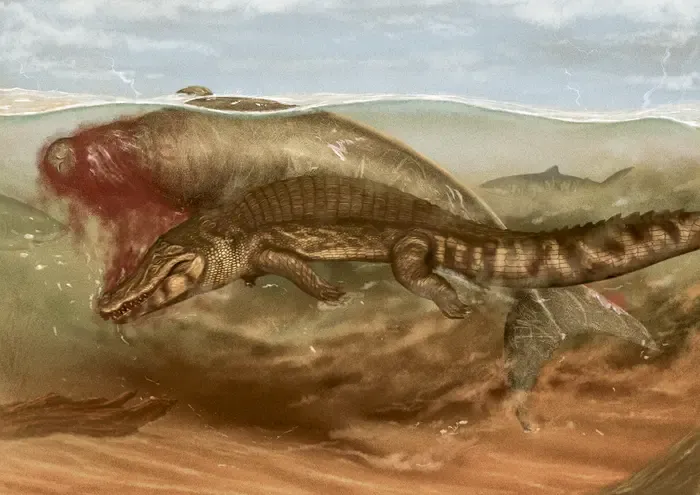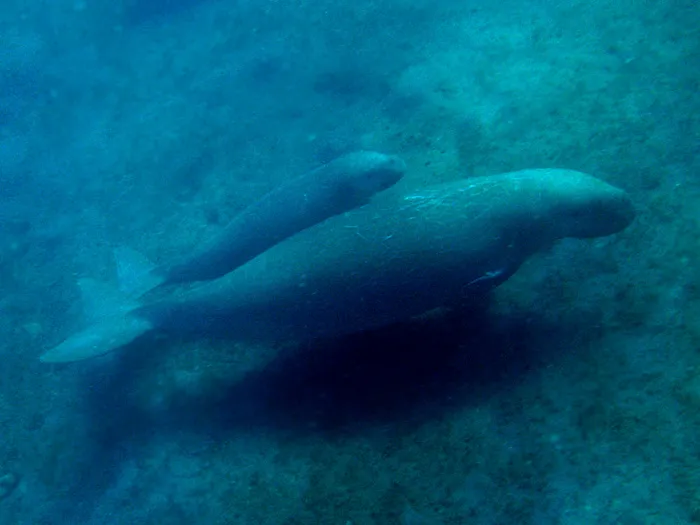Fossils Capturing a Sea Cow’s Violent End Shed Light on Prehistoric Food Chains
New research suggests the dugong-like sea creature was attacked by a crocodile, then its remains were scavenged by a tiger shark—a rare series of events to be immortalized in the fossil record

When a farmer in Venezuela identified some unusual-looking rocks south of the city of Coro, he thought they were just that—strange stones. But when examined by paleontologists, his find revealed something much different: prehistoric fossils bearing evidence that, sometime between 11.6 million and 23 million years ago, one particular sea cow had a very bad day.
The remains suggest a dugong-like sea cow of the now-extinct genus Culebratherium was preyed upon by both a crocodile and a shark. The findings give rare insight into the interactions of prehistoric food chains and were published in the Journal of Vertebrate Paleontology on Wednesday.
“It’s super rare to find evidence of two predators on a single specimen,” Aldo Benites-Palomino, lead author of the study and a paleontologist at the University of Zurich in Switzerland, tells CNN’s Katie Hunt. “It shows why we should be exploring for fossils in tropical regions like [Venezuela].”
The remains include a partial skull and 18 vertebrae belonging to the same creature. The team was able to date the rocks encompassing the fossils—which indirectly indicated a rough date for the remains—by consulting geological maps and examining the sediment layers. Solving the mystery of what caused the sea cow’s death, however, required a fair amount of forensic investigation.
“Have you seen the Batman movie? There is a scene where he and Alfred are shooting bullets to try and figure out which specific type of bullet they are trying to find,” Benites-Palomino tells Newsweek’s Tom Howarth. “Our research was framed in exactly the same way. We have these experiments in the wild where predators are attacking their prey, and then afterwards we try to compare which is the best suite of scenarios for what we’re finding there.”

Conspicuous tooth marks on the sea cow’s snout suggest the crocodile attacked first and attempted to suffocate it. Other gashes indicate the predator followed up its initial strike with dragging and tearing motions, completing the attack with a death roll—a killer move also common in modern crocodiles that involves latching onto their prey with a powerful bite and rapidly twisting.
As if the crocodile wasn’t enough, a tiger shark then joined the feast. Known as the “dustbins of the sea,” per Live Science’s Melissa Hobson, tiger sharks often rely on scavenging, a technique that’s worked out for them for millions of years. This individual literally left its mark in the form of shark bites—and a tooth lodged in the sea cow’s neck. The irregular distribution of the bites on the fossils indicated to the team that they were made by scavenging.
The study provides further evidence that millions of years ago, the food chain wasn’t all that different from the way it is today. It also “highlights the importance of sea cows within the food chain,” Benites-Palomino says in a statement.
However, Dean Lomax, a paleontologist who wasn’t involved with the study, points out to CNN that it is difficult to differentiate evidence of scavenging from that of preying: “For instance, it is perhaps not unreasonable to think that the dugong was already dead, perhaps had floated and (was) bloated, and then was dined upon (scavenged) by the crocodylian and shark(s) at different times,” he says in an email to the publication. “It is always inherently rare to say 100 percent whether this was definitively the result of an active attack over scavenging.”
Despite the evidence for the researchers’ proposed scenario, the authors note it is impossible to know the exact circumstances of the sea cow’s potentially violent death.

